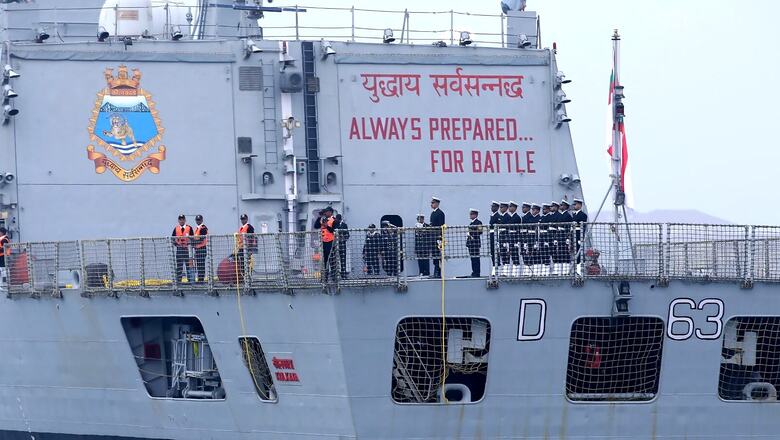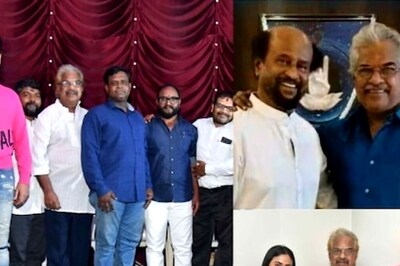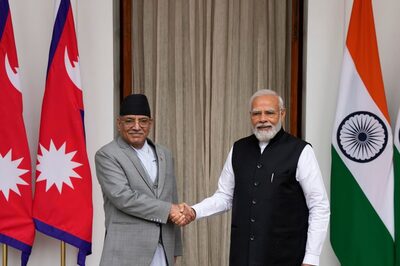
views
Three top initiatives in the last decade have underpinned India’s growing maritime consciousness. The latest, and a pivotal one, is the appointment of former naval vice chief, Vice Admiral G Ashok Kumar, as India’s first Maritime Security Coordinator. The appointment comes over two decades after a maritime structure on similar lines was first recommended by a Group of Ministers in 2001 post the 1999 Kargil conflict.
The other pioneering efforts towards this direction was setting up the Indian Navy’s Information Management and Analysis Centre (IMAC) at Gurugram in 2014 at a cost of Rs450 crore as the nodal agency for the fusion of maritime data from various agencies and other sources in response to the 26/11 Mumbai terror attacks.
The subsequent establishment of the Information Fusion Centre – Indian Ocean Region (IFC-IOR) in 2018 under the aegis of IMAC to promote international cooperation and data sharing with partner nations was another crucial milestone towards bettering maritime security and safety in the Indian Ocean Region (IOR). It is linked with 21 partner countries and 22 multi-national agencies.
Both IMAC and IFC-IOR were put in place to generate a comprehensive maritime domain awareness of Indian waters with the former slated to soon transform into a maritime information hub for the IOR.
These surely were concrete steps towards piecing together India’s overall maritime domain awareness picture — critical to India’s maritime security. However, it is paramount to close the loop with another step for the picture to be complete.
This would be to bridge the data integration gap for creating a common operational picture that would provide India with a comprehensive maritime domain awareness.
A 2020 report in The Hindu stated that there are plans to transform IMAC into a multi-agency National Maritime Domain Awareness (NMDA) centre. There were also some discussions in the defence and security circles to expand the NC3I network for integration of data from all maritime agencies towards this project, which is aimed at a comprehensive maritime domain awareness and is intrinsically linked to India’s maritime security.
However, the pace of integrating the networks for strengthening national maritime domain awareness has been slow in the last two years.
Need for Detailed Common Operational Picture
There are more than 25 agencies or departments that are either responsible for coastal security and maintaining law and order at sea or have a role to play in piecing together the complete picture for maritime domain awareness with their databases.
Maintaining law and order at sea includes prevention of illegal trafficking of drugs, weapons, humans, piracy and illegal fishing or exploitation of resources in India’s exclusive economic zones, among others. Coastal security involves unwanted elements piercing the maritime security layers and landing on the Indian coasts.
The IMAC currently puts together a consolidated picture from the fusion of maritime data which primarily comes from the Indian Navy and the Indian Coast Guard through the National Command Control Communication and Intelligence System (NC3I) network, which has been operational since 2014 as an independent network.
The network has interlinked 51 coastal stations, Joint Operations Centres of the Indian Navy and the Indian Coast Guard, other maritime security agencies and their headquarters. This information is collated at IMAC with data from other sources.
The other sources also include data from ships, maritime surveillance aircraft, satellite data gathered from Automatic Identification Systems (AIS) transponders fitted on merchant ships and larger fishing boats, long range identification and tracking data from the Ministry of Shipping and white shipping data from partner countries.
Efforts are also underway to install AIS on fishing vessels under 20m to track them efficiently.
Despite this heavy infrastructure, there remains a significant data integration vacuum since most of the other 25-plus agencies do not share data with IMAC — either due to absence of a dedicated network or other reasons. Thus, there is lack of a larger and more comprehensive common operational picture.
The vacuum looks bigger with around 12,000 vessels present in the IOR at any given time and tracking them continuing to be a major challenge.
What adds to the challenge is the multiplicity of agencies involved in maritime affairs and different laws empowering each one of them.
Plugging this gap to generate a comprehensive common operational picture which is available with all the relevant agencies will ensure that crucial time and resources are not wasted in turf wars, and in flagging a threat in the sea by one agency and taking action against it by the other.
The post of the Maritime Security Coordinator can make this happen.
Focus of Maritime Security
In the last three years, maritime affairs have dominated the discourse in the military and government circles.
The Niti Aayog last year set up a high-level Blue Economy Coordination Committee (BECC) with representation from National Security Council Secretariat, as well as ministries of external affairs, defence, home affairs, commerce, fisheries, earth sciences and department of expenditure, among others for coordination and integration of initiatives in India’s blue economy domain.
Maritime security was also one of the three key priority areas when India started its month-long presidency of the United Nations Security Council (UNSC) last year.
With the heightened focus on maritime security at this time, making changes to the data integration apparatus should take precedence over other issues.
Filling up this data integration gap on priority will go a long way in ensuring India growing stature in the IOR in providing maritime safety and security, thus preventing crimes and yet another 26/11 kind of terror attack.
Read all the Latest India News here




















Comments
0 comment